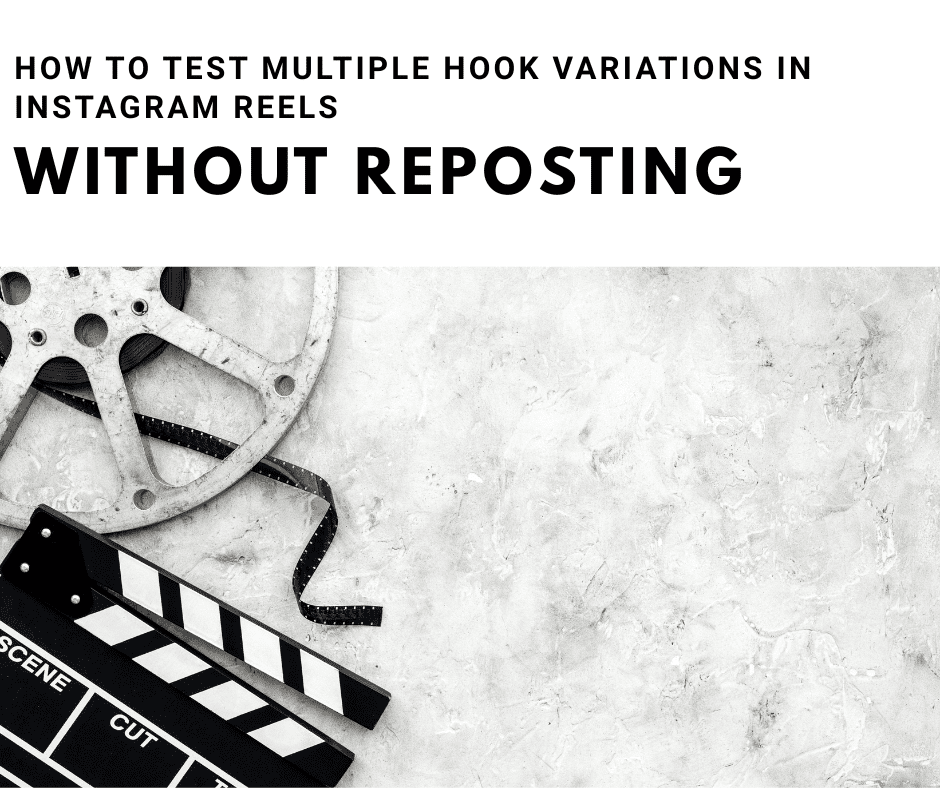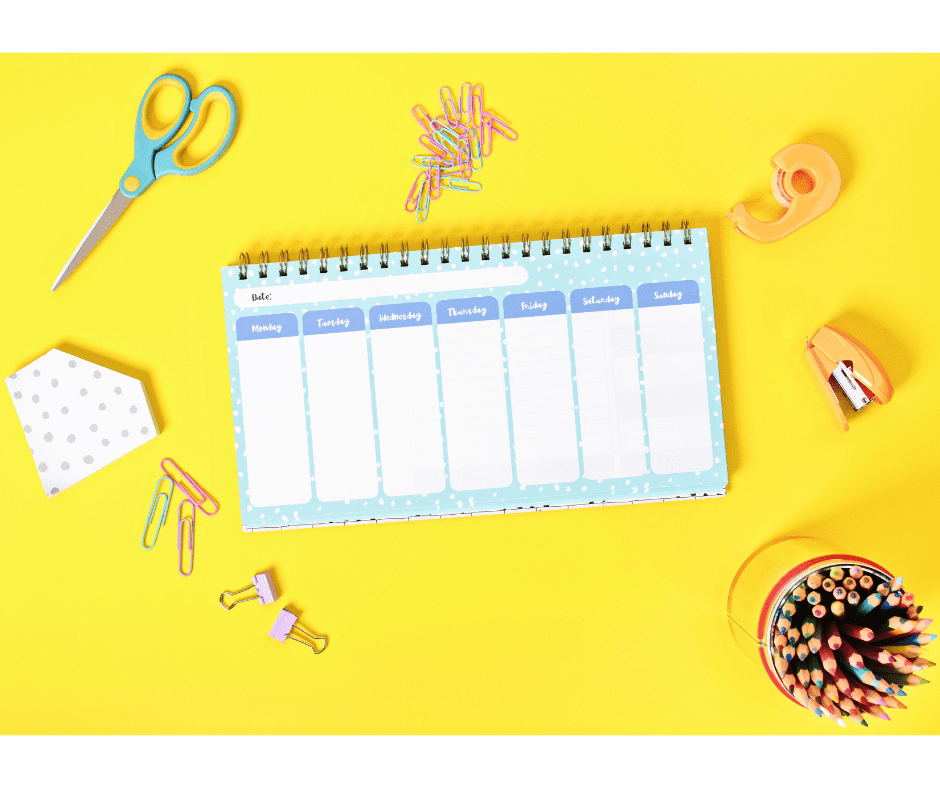Last Updated on July 22, 2025 by Val Razo
In a world where the Instagram algorithm decides what content gets shown to non-followers, the first 3 seconds of your Instagram Reels matter more than ever. But how do you know which hook works best—without flooding your Instagram feed with reposts or hurting your reach? That’s where the trial reel comes in.
Using Instagram’s trial reels feature, content creators can now test different hooks, CTAs, and visuals without committing to a permanent post. It’s a data-driven method that helps refine your content strategy, increase watch time, and boost engagement—all without annoying your followers.
In this guide, you’ll learn how to use Instagram trial reels to experiment safely, tap into analytics, avoid guessing what works, and get strategic about your content creation. Whether you’re building reels ideas, trying new content pillars, or aiming to grow your small business on Instagram, these best practices will show you how to make every second count.
What Is a Trial Reel and Why It Works
The trial reel is a smart workaround for creators and marketers looking to test content before committing it to the main Instagram feed. Unlike traditional Instagram Reels, which are published permanently, trial reels let you gauge engagement signals—like watch time, taps, and retention—without the risk of hurting your metrics or cluttering your profile.
Difference Between a Trial Reel and a Regular Instagram Reel
A trial reel is typically uploaded to a secondary account, private account, or hidden from your grid and hashtag feeds. This allows you to test different hooks, CTAs, and content ideas on a limited audience before deciding whether it’s worth sharing to your full Instagram account.
Unlike full posts, trial reels can be used to test:
-
Different caption formats
-
Variations of trending audio
-
Hook styles that retain viewers in the first 3 seconds
-
Overall content type and structure
This testing method is ideal for creators who want to test visuals and messaging combinations before pushing them to the masses. Think of it as a low-risk lab for your social content.
I started using a private test account to trial different hooks and noticed a huge difference—one version got 3x the reach just by opening with a better question.
How the Instagram Algorithm Interacts with Trial Reels
While Instagram’s algorithm treats most reels the same in terms of reach and engagement, trial reels operate under different user-controlled conditions. When you choose to hide your reel from the Reels tab or Instagram posts grid, you’re effectively isolating performance without triggering the algorithm’s broader discovery pathways.
However, if you monitor them using your dashboard or Instagram analytics, you can still get valuable insights into:
-
How long viewers watch
-
Drop-off points
-
How often content gets shared via DMs
-
Which versions of the reel attract early engagement from non-followers
Using these insights, you can confidently choose which version to repost or scale, eliminating the guesswork that often plagues Instagram marketing strategies.
Pro tip: Use a private testing account or audience segmentation (e.g. Close Friends list) to safely experiment with trial reel ideas. This ensures minimal reach while still gathering valuable data from viewers who represent your target audience.
How to Use Instagram Trial Reels to Test Hooks
One of the smartest ways to optimize your Instagram Reels is by using trial reels to test different hooks. The first few seconds of any reel are critical for catching a viewer’s attention, and with Instagram’s algorithm prioritizing engaging reels, you can’t afford to guess what works. Using a trial reel allows you to experiment without the risk of losing visibility on your main Instagram account.
Step-by-Step Guide to Create and Upload a Trial Reel
You don’t need a special feature or setting to create a trial reel — just a smart workflow. Here’s how to do it:
-
Create a secondary Instagram account or set your main account to private (optional).
-
Film several versions of your reel with different hooks — change the visuals, audio, caption, or energy.
-
Upload one version of the reel at a time with limited visibility:
-
Remove it from your grid.
-
Avoid using broad hashtags.
-
Set to Close Friends (if applicable).
-
-
Wait 30 minutes to a few hours and collect performance data.
-
Test the next version.
This method is ideal for testing content before public release, helping you refine your messaging and visuals based on actual user behavior.
Tools and Dashboards to Track Reel Performance
Even trial reels produce enough data to help you make smarter decisions. Use these tools:
-
Instagram Insights: View metrics like watch time, reach, plays, likes, and shares directly in your app.
-
Creator Studio or Meta Business Suite: Useful for scheduling and comparing engagement signals across reels.
-
Manual tracking: Log your own metrics in a spreadsheet — track average view duration, click-throughs, and conversion intent (e.g. follows, profile taps).
If you’re experimenting with reels ideas, this method allows you to identify what’s performing well before you make it permanent. You’ll avoid wasting valuable time — and avoid hurting your reach by reposting underperforming content.
Pro tip: When testing hooks, keep all other factors (visuals, CTAs, music) consistent. That way, you know it’s the hook — not the rest of the content — that’s making the difference.
Instead of reposting underperforming reels, I now test 2–3 versions with slight hook or caption changes. The best one usually outperforms the others by 40% or more.
Key Engagement Signals to Measure During a Trial Reel Test
Testing Instagram trial reels isn’t just about uploading and waiting—it’s about tracking the right engagement signals to see which content is actually working. By identifying what hooks, visuals, and messages trigger action, you can create more engaging reels and drive stronger conversion across your Instagram account.
Watch Time, Saves, Shares, and Comments
The most telling metric when testing hooks is average watch time. If your viewers drop off in the first 3 seconds, it’s a clear sign the hook isn’t strong enough.
Other key engagement metrics to track:
-
Shares: Indicates that viewers found the content valuable or entertaining.
-
Saves: A strong signal to the Instagram algorithm that your content is worth returning to.
-
Comments: Especially if they’re meaningful or ask follow-up questions—this suggests the content sparked interest.
-
Profile visits and follows: These indicate your hook was strong enough to generate curiosity about your brand.
Use these metrics to determine which trial reel to push live on your main feed.
Using Analytics to Understand Hook Effectiveness
Once you’ve uploaded a few trial reels, jump into your Instagram dashboard or Creator Studio to compare the results.
Ask yourself:
-
Which version had the highest retention in the first 5 seconds?
-
Did any generate spikes in DMs or profile visits?
-
Which one had better performance with non-followers (shown under “Reach”)?
These data points help remove guesswork from your content strategy, allowing you to craft content that performs—not just content that looks good.
Pro tip: Keep a spreadsheet of your test results. Over time, patterns will emerge: specific trending audio, certain content types, or hook formats that consistently drive better results.
The goal is to turn these metrics into insights you can act on—helping you scale what works and stop reposting what doesn’t.
Best Practices to Optimize Reels Without Reposting
One of the biggest mistakes content creators make on Instagram is reposting the same underperforming reel, hoping for a different result. Not only does this annoy your audience, but it can also confuse Instagram’s algorithm and reduce your reach and engagement. Instead, focus on smart testing and strategic posting using trial reels.
How to Use Trending Audio and Trends in Trial Reels
If you’re going to test, do it with what’s trending. Using trending audio can give your trial reels a natural boost, especially during early testing phases. Even with limited visibility, Instagram may still favor reels that align with popular sounds or formats.
To do this:
-
Use Instagram’s in-app audio search to find trending sounds.
-
Choose audio with upward-trending arrow icons.
-
Pair each trial reel version with the same or similar trending audio to control variables during testing.
Trends also apply to visual formats—for example, using jump cuts, memes, or viral-style captions in your hook.
Tips to Avoid Algorithm Penalties While Testing
When testing with trial reels, keep the content off your main grid and avoid mass reposting. Here’s how to stay algorithm-safe:
-
Don’t delete and reupload the same reel. It resets performance and can signal spammy behavior.
-
Use private or secondary accounts for testing whenever possible.
-
Hide your trial reel from your main profile and Reels tab until you’re confident in its performance.
-
Avoid using unrelated hashtags just to get more views—this can confuse the algorithm about your content type.
Pro tip: Add different CTAs to each trial version (e.g., “Follow for more,” “Comment if you relate”) and see which one drives the most interaction. A small CTA tweak can significantly impact your conversion and engagement rates.
Following these best practices ensures your reel testing doesn’t backfire, letting you safely optimize your Instagram Reels without hurting your visibility or annoying your followers.
In 2023, Later, a popular social media scheduling platform, ran A/B tests using Instagram trial reels to compare different hooks and CTA placements. They discovered that reels with a bold, benefit-led hook in the first 1.5 seconds increased engagement by 38% compared to those with generic intros. By testing with private audiences and analyzing watch time, Later improved their video retention rates and reach—without reposting the same content.
Reels Ideas and Strategies for Ongoing Testing
Once you’ve nailed your testing process using Instagram trial reels, the next step is building a system that allows for continuous optimization. The key? Fresh content ideas, repeatable formats, and a strategy built around experimentation—not assumptions.
Fresh Trial Reel Ideas for Different Niches
You don’t need to reinvent the wheel for every test. Try these trial reel ideas based on common content themes:
-
Educators / Coaches: Test multiple hooks for the same tip (e.g., “Why your content isn’t working…” vs. “3 reasons your growth has stalled…”).
-
Product Brands: Compare product close-ups, use-case demos, or testimonials as different hooks.
-
Service Providers: Experiment with voiceovers, text-led reels, or face-to-camera intros.
-
Content Creators / Influencers: Mix aesthetics with trending audio, or compare storytelling vs. “talking head” formats.
Each version can serve as a trial reel, giving you clear feedback on what’s most engaging before it hits your main Instagram account.
Repurposing TikTok Content as Test Reels
Already testing content on TikTok? Great—repurpose those clips into Instagram trial reels. This saves time and gives you another layer of data. Keep these tips in mind:
-
Use Instagram-native features (like stickers, captions, music) to avoid reduced reach.
-
Adapt aspect ratios and length for Reels (under 90 seconds).
-
If something performs well on TikTok, it might not automatically do the same on Instagram—test anyway.
By using TikTok as a creative lab and Instagram for polished content, you’re building a data-driven content creation system.
Pro tip: Build a calendar to schedule Instagram tests weekly. Label your reels by theme or content pillar (e.g., “educational,” “entertaining,” “promotional”) and rotate through them. This ensures ongoing experimentation without burning out your audience or your content team.
Over time, this approach helps you produce more engaging reels, refine your Instagram marketing, and increase discoverability through smart, intentional testing.
91% of Instagram users watch videos weekly.
Conclusion
In today’s fast-moving world of Instagram Reels, success doesn’t come from guessing — it comes from testing. With Instagram trial reels, creators and marketers now have a low-risk way to test different hooks, experiment with reels ideas, and gather analytics before hitting publish.
By focusing on engagement signals like watch time, non-follower reach, and conversion, you can make data-backed decisions that drive actual results. Using best practices like hiding test content from your main grid, avoiding reposts, and leveraging trending audio, you’ll stay in good standing with Instagram’s algorithm and your audience.
Whether you’re building a content strategy, trying to grow your small business, or just want more content that performs, the trial reel method is your new go-to for smarter, safer, and more effective testing.
Frequently Asked Questions
How can I boost engagement on my Instagram Reels without buying followers?
To boost engagement organically, focus on improving your hook, using relevant trending audio, and delivering quick value in the first 3 seconds. Test what works using trial reels, and double down on content types that generate shares, saves, and comments. Consistency and smart testing are better long-term strategies than buying followers.
What role does the Instagram Reels algorithm play in content visibility?
The Instagram Reels algorithm prioritizes content that captures attention quickly and keeps viewers watching. It looks at watch time, replays, engagement (likes, saves, shares), and whether the reel is being shown to non-followers. Testing different formats with trial reels helps you figure out what the algorithm favors for your audience.
What are some effective ways to create content that drives conversions?
To create content that leads to engagement and conversions, combine a strong hook with a clear CTA (call to action). Use trial reels to test which version gets people to click, follow, or DM. Also, tailor your messaging for each stage of the buyer’s journey: awareness, interest, and decision.
Has the new Instagram layout or features changed how Reels perform?
Yes, the new Instagram updates (like separating tabs and emphasizing video-first content) have shifted how Reels are discovered. With more focus on video, your ability to test and experiment with different hooks, formats, and CTAs becomes even more crucial to stay relevant and competitive.
Should I experiment with different content types even if some are outside my niche?
Absolutely. When you experiment with different styles—like storytelling, tutorials, or humor—you gain insight into what resonates with your broader audience. Use trial reels to test riskier content ideas without hurting your reach. This strategy often uncovers new paths to boost engagement and attract new segments of your audience.
Author Bio
Val Razo
Val Razo is a skilled professional in the field of Instagram Marketing. With over five years of experience as a freelance Social Media Marketing consultant, Val has assisted numerous small and medium-sized businesses in achieving their goals.




